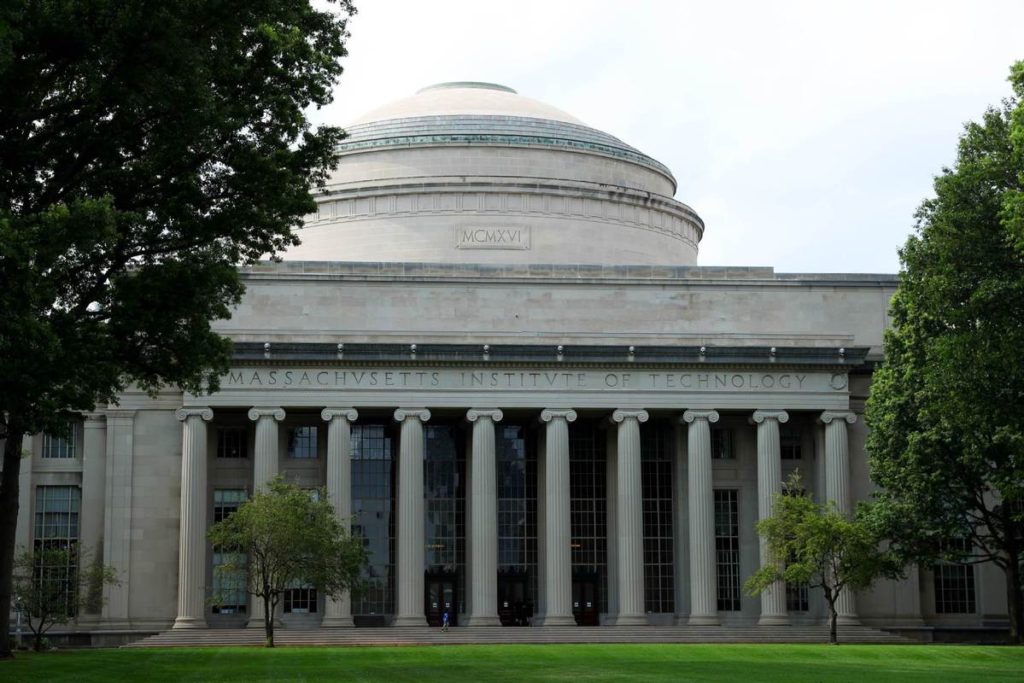美国恢复对中国留学生签证审批
环球网
8/24/2021
【环球网报道 记者 张晓雅】一边恢复为中国留学生发放签证,另一边,美国仍在收紧对部分高科技专业中国留学生签证的限制。
“随着中国留学生人数回升至疫情前水平,美国开始重新为中国学生发放签证。”香港《南华早报》24日以此为题报道称,在新冠疫情导致签证审批暂停后,美国在即将到来的秋季学期开学前恢复向中国留学生发放签证。
美国务院官方数据显示,今年5月,美国开始加强对中国学生的签证审批工作,F1签证(最常见的一种学生签证类型)最新数量与2019年底新冠疫情暴发前发放的签证水平相当。
报道称,今年6月,美国向中国公民发放了33896份F1签证,而2020年6月发放的只有8份。去年6月,美国驻世界各地使馆因疫情暂停了常规签证服务。
与此同时,报道援引中国一些教育机构从业者消息称,即便赴美留学生的签证程序已基本“恢复正常”,某些高科技或战略领域研究生的签证事宜继续受到更严格的审查。
“今年秋季,美国学校将在很大程度上恢复线下授课,因此学生签证预约可照常进行,但其他赴美签证申请尚未重新开放。”总部位于北京的一家咨询公司员工透露,“只是有些研究生可能因涉及敏感研究领域,所以其签证的审批可能会受到一定影响,但本科生签证不会受影响。”
来自北京另一家教育机构的从业者具体提到赴美中国留学生的签证问题,“有一小部分人对签证状况感到担忧,尤其是那些STEM(科学、技术、工程和数学)和军事相关领域的人,所以他们可能会选择签证政策更宽松的国家,比如英国、瑞士或加拿大。”
今年7月26日,中国外交部副部长谢锋在天津同美国常务副国务卿舍曼举行会谈后告诉媒体,会谈中,中方向美方提出两份清单,一份是要求美方纠正其错误对华政策和言行的清单,一份是中方关切的重点个案清单。在中方关切的重点个案清单里,中方主要就中国部分留学生赴美签证遭拒,中国公民在美遭受不公正待遇,美不法分子滋扰、冲撞我驻美使领馆,美国国内仇亚、反华情绪滋长,中国公民遭暴力袭击等个案向美方表达严重关切,要求美方尽快解决,切实尊重、保护中国公民和机构在美的合法权益。
今年4月底,美国驻华大使馆和领事馆官方网站发布公告称,允许向中国境内申请人发放学生签证。中国专家当时接受《环球时报》记者采访时表示,这是一个明确的积极信号,为中美之间人文交流的恢复迈出重要一步,主要原因可能是迫于美国高校的营收压力放宽学生签证。
美国《华尔街日报》同月刊文称,外国留学生是美国大学的主要收入来源,受到疫情影响,去年秋季美国大学的入学人数大幅下降,持F/M签证的外国留学生数量下降18%,申请签证的新生人数下降了72%。报道称,中国留学生约占美国国际学生总数的1/3,签证的不确定性给美国高校带来的沉重压力或许是美国政府实行此项新政的原因。
U.S. universities face another school year of too few Chinese students
BY GRADY MCGREGOR
8/20/2021
In the coming weeks, tens of millions of students are set to descend on college campuses across the United States in what many universities had hoped would kick-start the first normal and mostly in-person academic year since the onset of the pandemic. The rise of the Delta variant may be complicating those plans, but there is another factor threatening a return to college as usual: U.S. universities may be losing their luster in China, the U.S.’s largest source of international students.
Chinese student applications for the coming academic year shrank 18% compared with last year’s cycle, according to data from application platform CommonApp. The decline appears especially pronounced given that U.S. colleges got a 9% boost in applications from international students in this cycle compared with the previous one. School administrators and experts attribute the overall boost in applications, at least in part, to U.S. President Joe Biden’s electoral victory over Donald Trump last November and the perception among that the new administration would be more receptive to visa applications from foreign students and employment visas for U.S.-educated students after they graduate.
But dwindling interest from Chinese students still threatens a major and steady source of revenue for U.S. universities.
In the 2019–2020 academic year, 372,000 Chinese undergraduate and graduate students studied at U.S. universities, accounting for 35% of the total international student population. India, the second-largest source of U.S. international students, sent 193,000 students to American universities, accounting for 18% of the nation’s total international student population.
The U.S. Department of Commerce estimated that in 2019 international students contributed $44 billion to the U.S. economy. That year, the living fees and tuition expenses of Chinese students accounted for $15.9 billion—a figure nearly equivalent to the amount of money the U.S. government spent on Operation Warp Speed in 2020 to help develop COVID-19 vaccines.
The waning interest from Chinese students is a result of U.S. visa restrictions on Chinese students, an increase in anti-Asian racism in the U.S. amid the pandemic, and rising tensions between the U.S. and China. But a slight drop in applications may not prove calamitous, and even a global pandemic and rising geopolitical pressures may not be enough to fully stem the tide of Chinese students opting to study in the U.S.
A closing door
When college campuses shut down and classes went remote in March 2020, Chinese and other international students faced a difficult choice: Make an expensive—and potentially dangerous—journey home or find a place to stay on campus.
The majority of Hanson’s friends left campus, but the then-sophomore at Wesleyan University in Connecticut opted to stay because the cost to go home to Beijing was prohibitively expensive. Hanson, who declined to share his last name because of concerns about his visa status, was suddenly alone in a house that usually sleeps 20 people, isolated from most of his college friends and family in China.
After schoolwork, “I was just trying to keep myself entertained. That was my major job,” he said, explaining he spent time reading or talking with friends on the phone.
But staying on campus early on benefited Hanson when Wesleyan resumed classes in the fall of 2020. His Chinese friends who went home mostly stayed in China because the U.S. required them to fly to a third country and quarantine for two weeks before entering the U.S. At the time, the U.S. government deemed China a high-risk country due to concerns about COVID-19, even though China had largely eradicated the spread of the virus months before. The U.S. lifted the ban on direct flights for Chinese students returning to campus in April 2021. New Chinese international students were almost entirely prohibited from entering, as U.S. consulates around the world largely suspended visa services during those months. Between April and September 2020, the U.S. issued 808 new visas to Chinese students compared to 90,410 the year before, according to the U.S. State Department.
“[Chinese] students and families had to slowly gain awareness that they were not getting visas because no visas were being issued…and that they would have to do the year online,” says Tomer Rothschild, cofounder of Elite Scholars of China, an education consulting firm helping Chinese students get into U.S. prep schools and universities. “Last year was just pandemonium because there were no good answers.”
Rothschild says that parents were less motivated to pay full tuition for online classes from China. Tuition at top private schools like Harvard and Columbia range from $49,000 to $61,000, respectively. And even if students are not paying room and board while away from campus, many colleges still charge thousands of dollars in mandatory additional fees to help maintain their campuses. For Chinese international students taking classes online, “I’m not sure that’s really attractive,” he said, explaining that some of his former students dropped out.
For the upcoming academic year, U.S. consulates in China and around the world have prioritized approving student visas to ensure that international students can return to college campuses. With more U.S. consulates reopened this year, from May to June the U.S. approved 143,000 student visas, including 57,000 for Chinese students.
Rising tensions
But even as consulates process visas, politics may be getting in the way of a full rebound.
In May 2020, former U.S. President Donald Trump banned Chinese graduate students in fields like science and technology with ties to the Chinese military from studying at U.S. universities. American officials allege that such students may pose a national security threat and could steal state secrets from the U.S. President Joe Biden’s administration has continued to impose Trump’s order. Over 1,000 Chinese students have had their visas revoked since Trump implemented the ban. Hundreds of the students have banded together and plan to hire a lawyer to challenge the ban in court, but the Biden administration has defended the order as necessary to protect national security interests.
The ban targets only a small number of students, but it sends a message that the U.S. is no longer a welcoming place for Chinese students, says Rothschild.
Yusen Zhai, a counselor in Alabama who has focused on the mental health of Chinese students in the U.S. during the pandemic, says that the visa restrictions, a rise in hate crimes against Asians in the U.S., and early media coverage of COVID-19 that associated China with the virus took a toll on the well-being of Chinese students. “This climate led to public fear and alienation of international Chinese students,” he says.
The deteriorating circumstances for Chinese students, combined with a rising tide of nationalism in China, have made Chinese parents less motivated to send students abroad.
Hanson says that much of his family in China now views the U.S. as an increasingly dangerous and unwelcoming place, and he is not sure if they would still be supportive of his choice to study in the U.S. if he was applying to colleges today.
“It would definitely be hard for me to go…if I were to make the decision to [leave China] and study in the U.S. now,” says Hanson.
Staying power
Top U.S. universities like Harvard and Stanford may not be losing Chinese applicants. Neither school returned Fortune’s request for comment.
“[The top schools] exert a tremendous gravitational pull on Chinese students,” says Rothschild.
But other colleges are struggling.
“The schools that don’t have a national reputation, or an international reputation, those schools have had a much harder time recruiting students,” Rothschild said.
Michigan State University (MSU) was one school that capitalized on booming interest in Chinese students in recent decades. From 2006 to 2016, MSU increased its Chinese international student population by a factor of seven, from 602 total undergraduate and graduate students in 2006 to 4,599 in 2016. But from 2016 to 2019, the number of Chinese international students enrolling at MSU fell by roughly 7% each year.
“The last couple of years have been difficult in terms [of Chinese student enrollment numbers] falling off,” says Patty Croom, director of international admissions at MSU, a state school with a total enrollment of 50,000. She attributed declining interest from Chinese students to worsening U.S.-China relations and increased interest among Chinese students to study in places like Canada and the U.K.
Croom says that while Chinese enrollment was already declining, it plummeted during the pandemic. From fall 2019 to fall 2020, Chinese student enrollment at MSU dropped by 25%, from 3,226 students to 2,432. MSU has not made enrollment figures public yet for its upcoming academic year, but Croom is not expecting the numbers of Chinese students to return to pre-COVID-19 levels. “The pandemic exacerbated the decline [of Chinese students at MSU],” says Croom.
Schools with smaller populations of Chinese international students are also in a tight spot.
“One of the emerging themes for this year was that pretty much across the board, most institutions saw a steep decline in applications from students from China,” says Kristin Crosby, director of international admissions at Ohio Wesleyan University. “It was a huge hit to their revenues,” she said. Ohio Wesleyan has not publicly released statistics about its incoming class, but Crosby said that applications are down from Chinese international students in comparison to previous years.
Croom says that the loss of Chinese students to MSU will certainly have negative “financial impacts” given that Chinese students pay higher out-of-state tuition to the university than students from Michigan. But she said it would not be “debilitating” because MSU is a large university that recruits students from all over the world. She said MSU has continued to step up efforts to recruit in China through social media platforms like WeChat and hiring an MSU representative in the country within the past few years. Academically, MSU is also adapting to ensure its students from China eventually come back to Michigan. Last year, MSU partnered with universities in China to allow students to take classes at Chinese universities for MSU course credit, she says.
Given the overall boost in international applications, universities may also be able to make up the deficit in declining Chinese student populations through focusing recruitment efforts elsewhere.
Croom said MSU’s reliance on Chinese international students has been “unbalanced” compared to international students from elsewhere, and the university has expanded efforts to recruit from places outside China. “Part of our strategic planning is to make sure that we are diversifying our populations more effectively,” she says. MSU’s enrollment numbers show that international student numbers, as a whole, did not fall as quickly amid the pandemic as the Chinese international student population. From fall 2019 to fall 2020, overall international student enrollment at MSU declined 19.8%, less than the 25% drop from Chinese students.
Still, U.S. universities seeking students from China have a large pool to draw from. The features of higher education in China that funnel students to the U.S. have not changed.
Chinese students’ ability to get into top Chinese institutions like Peking University or Tsinghua University in Beijing is determined almost entirely by how well they perform on a single college entrance exam called the gaokao. Chinese students who live outside major cities also are at a structural disadvantage to earn a spot at prestigious schools because major universities are often located in urban centers that prioritize accepting students who live nearby. Tsinghua and Peking universities each have a roughly 1% acceptance rate, but that figure drops to about 0.1% for applicants who lack a Beijing hukou, or house registered in Beijing city limits. Even with the challenges of studying abroad, students left out of China’s elite schools are still incentivized to consider the U.S. for their university studies, Rothschild said.
“The [gaokao and hukou system] account for a big part of why students are going to study abroad,” says Rothschild. “These factors are not going to change dramatically.”
US still rejects Chinese STEM student visa applicants
By ZHANG YUNBI
7/06/2021

Sources told China Daily that Washington has kept playing a hypocritical, double-faced role in China-US education exchanges this year, as it encouraged US universities to enroll more Chinese students while failing visa applications from over 500 Chinese students who had obtained offers to pursue postgraduate study in STEM majors.
About a quarter of these students have won US scholarships, and the majority submitted visa applications after the new US administration took office, sources familiar with the matter told China Daily, on the condition of anonymity.
The affected Chinese students were applying for doctorates or master’s degrees in the US, and most focused on science and technology majors, including electronic engineering, computers, mechanics, chemistry, material science and biomedicine, according to the sources.
The US universities they plan to attend include Harvard, Yale, the University of California Berkeley, Massachusetts Institute of Technology and Johns Hopkins.
However, the US embassies and consulates in China rejected their visa applications, saying they did not comply with Section 212 (f) of the Immigration and Nationality Act and Presidential Proclamation 10043.
The proclamation accuses the Chinese government of using its overseas students to acquire sensitive US technologies and intellectual property, and it suspends entry of those Chinese students and researchers who Washington defines as being connected to China’s “Military-Civil Fusion Strategy”.
Some of these students have co-signed a letter urging the US government to tackle this discrimination and suppression issue targeting Chinese students.
The US government’s suppressing Chinese students and scholars also has prompted concerns in US education and academic circles.
On June 10, the American Council on Education and other US higher education organizations requested a briefing on the implications of Proclamation 10043 from the State Department, specifically from representatives of the Bureau of East Asian and Pacific Affairs, the Office of Consular Affairs, and the Bureau of International Security and Nonproliferation.
According to data provided by US academic institutions, visa frustrations of this kind will affect about 3,000 to 5,000 Chinese STEM students pursuing postgraduate study or Chinese visiting scholars in STEM majors every year.
As early as June 2019, the Chinese Ministry of Education issued an alert on studying in the US in response to the Donald Trump administration’s suppression of Chinese students.
After Trump signed Presidential Proclamation 10043 on May 29 last year, Foreign Ministry spokesman Zhao Lijian responded by saying, “this action is stark political persecution and racial discrimination” and a grave violation of the legitimate rights and interests of Chinese students and researchers in the US.
Such a move goes against the trend of the times in international talent exchange and “will gravely impact the normal cultural and personnel exchange between the two countries”, Zhao said, adding that Washington should immediately retract its wrong decision, and respect and protect the legitimate rights and interests of Chinese students in the US.
However, since Joe Biden took office as the new US president, there still have been cases taking place affecting Chinese scholars and foreign students, the anonymous sources told China Daily.
The citizens involved were faced with situations such as visa application rejection; prolonged body search, interrogation and even repatriation at the US airports; harassment during their stay in the US and unjustified detention or interrogation by US national security authorities, sources said.
Given the fact that US embassies and consulates in China resumed operations for student visa applications in early May, Washington has attempted to look like it is responding to the urges of US universities to attract a large number of Chinese students and ensure tuition income, thus showing a gesture of cooperating with China in education, the sources noted.
“But, on the other side, it continues the Trump administration’s erroneous policy of suppressing Chinese postgraduate students and scholars in STEM majors and seriously violates the legitimate rights and interests of Chinese citizens studying abroad,” the sources added.
The sources urged Chinese students and scholars planning travel to the US to “examine the recent series of outrageous moves by the US and get a clearer picture about the crux of the US government’s policy, which is to step up suppression on China-US people-to-people exchanges”.
These Chinese students and scholars are expected to “make an objective and rational assessment of, and an estimation from, visiting and studying in the United States so as to avoid unnecessary losses”, the sources added.
Source: http://global.chinadaily.com.cn/a/202107/06/WS60e3ccbba310efa1bd660020.html
报告:近九成中国民众倾向理工科职业
6/19/2021
3M公司发表报告显示,疫情暴发一年多以来,中国民众对科学的信任程度显著上升,近九成中国民众更倾向于追求STEM(科学、技术、工程、数学)职业。
据21世纪经济报道,3M公司发表科学现状指数年度调查报告显示,与全球69%的数据相比,绝大部分(91%)的中国民众认为,年轻人在疫情后对科学和科学相关议题的参与度比以往任何时候都高,预示着将迎来一个充满希望的后疫情时代。年轻人对科学与日俱增的热情表明,科学在人们心目中的形象将持续提升。
调查显示,97%的民众认为科学为他们带来了未来的希望,而相应的全球比例为89%;96%的中国民众认为不重视科学将对社会产生负面影响,全球比例是85%。
疫情暴发一年多以来,中国民众对科学的信任程度显著上升,创下了3M科学现状指数调查开展四年以来的新高。如今,中国有97%的人信任科学,在受访的17个国家中拥有最高的科学信任度。
对科学的高度信任影响着人们的行为,并在很大程度上促使日常生活重回正轨。大多数中国民众在公共场合会佩戴口罩(86%)、勤洗手(81%),并尽可能避免参加大规模集会(75%)。若有人质疑科学,大部分中国民众(中国85%对全球75%)都会捍卫科学,而在中国Z世代的成年人中,这一比例更是高达90%。
3M大中华区研发运营总经理熊海锟说:“2021年度的3M科学现状指数调查报告表明,中国民众对科学的兴趣度比大多数的国家都高,并且仍在不断增长。人们认为科学对社会的未来大有裨益,也因此愈发重视STEM教育等领域。”
调查报告显示,人们对STEM教育怀有浓厚兴趣,几乎所有中国民众都认为这个世界需要更多人投身到STEM相关职业中去(中国96%对全球90%)。由于疫情的影响,近九成(88%)的中国民众更倾向于追求STEM职业。与此同时,全球只有60%的民众表达了这一想法。
另外,为倡导STEM平等,96%的中国民众认为促进STEM领域的多元和包容非常重要。事实上,无论男女,都一致同意需要做更多的工作来解决女性面临的STEM不平等问题。为此,人们相信必须营造公正平等的环境。在中国,81%的民众承认少数弱势群体经常无法获得平等的STEM教育机会(全球73%)。
中国民众认为,解决STEM不平等问题离不开来自企业的助力。97%的中国民众(全球89%)认为,企业在推动STEM多元化方面发挥着关键作用。在那些认为企业应当为STEM教育提供支持的民众中,他们希望企业优先考虑的举措包括为孩子和老师创造更多STEM教育资源(45%)、投资于激发孩子们对科学热情的项目(43%)以及帮助确保弱势的学生有平等的机会接受 STEM 教育(40%)。
擅长数学 挑选什么专业可以发挥自己的专长?
4/28/2021
很多同学在学习中都有自己擅长的领域,今天来分享一下对于数学好的同学,挑选什么专业可以最大发挥自己的专长。
数学类专业

数学是研究数量关系与空间形式的科学,是现代科学与技术的基础。数学是忽略了物质的具体运动形态和属性,纯粹从数量关系和空间形式的角度来研究现实世界的,具有超越具体科学和普遍适用的特征,具有公共基础的地位。
数学与应用数学包括基础数学和应用数学两方面。统计学是应用数学的一个分支,很多高校的数学学院除了有数学系、信息科学系外,还设有统计、精算、金融数学等科系。
人工智能类专业
人工智能发展的核心趋势之一,就是通过深入研究人工智能的理论模型,让人工智能拥有越来越强的学习能力,最终实现自主学习。而数学也正是建立人工智能模型最重要的基础之一。如果考生将来想向人工智能领域发展,又喜欢理论研究,除计算机科学外,数学专业也同样是一个不错的切入点。
建筑学专业

每一幢建筑的背后,都有一群建筑设计师在为它挠心挠肺地算各种数据。除了想象力,建筑设计师还必须了解建筑材料、力学、结构问题等一系列的建筑知识。他们也需要学代数、微积分、线性规划、统计学、三角学……
机械设计制造及其自动化

机械设计制造及其自动化是研究各种工业机械装备及机电产品从设计、制造、运行控制到生产过程的企业管理的综合技术学科。除了自然科学知识,也需要技术理论基础知识。
计算机专业
计算机专业一直是理科生报考的热门专业,开设该专业的院校分布在各个层次。计算机科学专业涉及的课程包括:高等数学、线性代数、概率论与数理统计、高级语言程序设计(如C、C++)、离散数学、数据结构等,似乎门门课都有数学的影子。
通信工程
通信工程是电子工程的一个重要分支,电子信息类子专业,同时也是其中一个基础学科,关注的是通信过程中的信息传输和信号处理的原理和应用。对数学、物理的要求很高。一般在一所理工类院校中,除了数学专业外,计算机的数学算是最多最难的了。学习该专业不仅仅需要你有数学的思维能力,还需要实实在在掌握数学知识。
金融类专业

金融类专业对学生数学的要求大都非常高。从当前的金融学科专业分布来看,较有发展前景的专业方向有:公司财务、风险管理与控制、保险精算、证券投资等。学过高等数学的金融类人才更受欢迎,尤其是证券、保险类。



